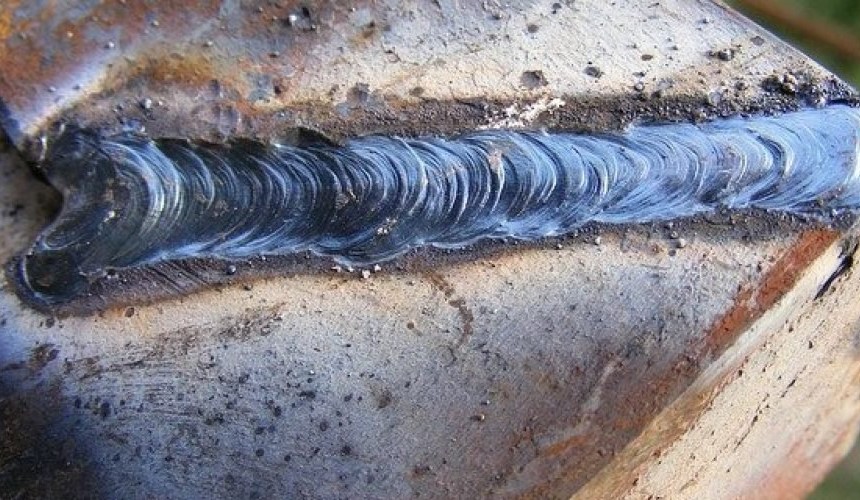Necessary Tips for Welders: Preventing Undercut Welding and Ensuring Stronger Weld Joints
In the realm of welding, accomplishing durable and strong weld joints is the cornerstone of creating top quality work. One common difficulty that welders often encounter is undercut welding, which can compromise the integrity of the weld joint.

Comprehending Undercut Welding
Undercut welding is a common welding flaw that happens when the weld steel falls short to effectively fill the groove and causes a groove-like clinical depression along the weld bead. This problem deteriorates the weld joint, making it vulnerable to breaking and failing under stress and anxiety. Damaging can be created by different elements, consisting of excessive welding existing, high welding rate, inappropriate electrode angle, wrong electrode size, and inadequate welding method.
Among the main reasons for undercut welding is an inequality between the welding current and the welding speed. If the welding current is expensive or the welding rate is too quick, the weld steel might not appropriately load the groove, causing undercutting. Furthermore, using an electrode that is too big can lead to a similar end result, as the excess metal can not effectively flow into the groove.
To avoid undercut welding, welders should guarantee they are utilizing the correct welding criteria, maintain an appropriate electrode angle, pick the suitable electrode size, and technique proper welding techniques. By dealing with these aspects, welders can lessen the threat of damaging and develop more powerful, more dependable weld joints.
Correct Welding Technique
Effective welding method plays a critical role in making sure the high quality and integrity of weld joints. One fundamental element of proper welding strategy is preserving the appropriate angle and range in between the welding gun and the workpiece.
Additionally, a regular and constant hand activity is vital for producing strong and long lasting weld joints. Welders ought to go for smooth, consistent activities to make certain also circulation of the weld product. Correct control of the welding gun and filler product is likewise vital to achieving optimum penetration and combination.
Furthermore, controlling the warmth input and choosing the ideal welding criteria based on the material being welded are essential elements in accomplishing premium welds - Preventing weld undercut. Welders ought to follow the suggested setups provided by welding treatment specs and readjust them as required based upon the certain demands of the task. By understanding correct welding methods, welders can dramatically enhance the stamina and integrity of their weld joints
Picking the Right Electrode
Maintaining the correct angle and distance in between the welding weapon and the work surface is essential when thinking about the relevance of picking the ideal electrode in welding applications. The option of electrode plays an essential function in establishing the quality and stamina of the weld joint. Electrodes are available in numerous kinds, each made for specific purposes and materials.
Firstly, choosing the suitable electrode size is important. Thinner electrodes are appropriate for welding slim materials, while thicker electrodes are much better for thicker products and greater warmth applications. Matching the electrode diameter to the density of the workpiece assists achieve a balanced weld.
Secondly, recognizing the material composition of the electrode is important. Different electrodes are created for welding specific materials like steel, stainless steel, light weight aluminum, or cast iron. Making use of the proper electrode material makes certain good combination and lessens the threat click to read more of defects in the weld.
Finally, considering the welding placement and strategy is important when selecting the electrode type. Certain electrodes are much better fit for above or upright welding settings, while others work well for flat or horizontal placements. Selecting the ideal electrode based on the welding technique enhances the total weld top quality and stability.
Preparing the Base Steel
To make sure an effective welding procedure, what preliminary actions should be taken when preparing the base metal for welding? In addition, any existing weld material or residue from previous welding should be eliminated to make sure a tidy surface area for the brand-new weld.

Performing Post-Weld Inspections

After performing these evaluations, welders need to contrast the results against market requirements and project needs to make certain that the weld joint fulfills all needed criteria. Any inadequacies or variances found throughout the post-weld evaluation needs to be quickly dealt with through proper restorative measures to guarantee the weld's integrity. By diligently executing post-weld inspections and immediately resolving any issues, welders can promote the high quality and dependability of their work, ultimately adding to the security and longevity of the bonded structures.
Conclusion

In verdict, preventing undercut welding and making sure more powerful weld joints call for a mix of appropriate welding method, visit this site right here picking the ideal electrode, preparing the base metal properly, and carrying out post-weld inspections. By comprehending the root causes of undercut welding and applying the needed preventative measures, welders can create high-quality weld joints that satisfy industry standards and guarantee the structural stability of the bonded parts.
Undercut welding is an usual welding issue that occurs when the weld metal stops working to effectively fill up the groove and results in a groove-like clinical depression along the weld grain (Preventing weld undercut). Damaging can be caused by various aspects, consisting of excessive welding present, high welding rate, incorrect electrode angle, inaccurate electrode size, and bad welding strategy
One of the main factors for undercut welding is an imbalance between the welding present and the welding speed. If the welding current is also high or the welding rate is as well fast, the weld steel may not sufficiently load the groove, leading to undercutting.Maintaining the correct angle and range between the welding weapon and the work surface is basic when taking into consideration the importance of choosing the best electrode in welding applications.
Comments on “Specialist Approaches for Preventing Weld Undercut Properly”